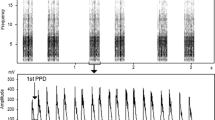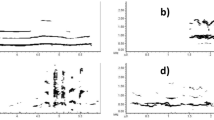Abstract
Management decision-making processes require reliable tools providing information on the distribution, abundance, and trend of populations. Wolves vocalize in response to human imitations of howls. Traditionally, this phenomenon has been the basis of a widespread monitoring tool to assess the reproductive status in a wolf pack, as well as to estimate the minimum number of individuals in the pack: the elicited-vocalization technique. However, despite its broad use, only a few attempts to quantify its accuracy have been made so far. Here, we carried out a test to evaluate the accuracy of estimates obtained from the elicited-vocalization technique. We administered “chorus tests” to 205 human subjects, 182 rangers—with different level of experience with wolves—and 23 subjects with no previous experience with the species. We found that the estimates of the number of wolves participating in a chorus were not accurate, regardless of the experience of the listener (the correct number of wolves was only determined in 32% of tests). Listeners, however, identified pups vocalizing 98% of the times when there were pups in the chorus. They also reported the presence of pups when they were not present with a high frequency (71%). Estimating the number of individuals by the unaided human ear is flawed because of the bias inherent in the elicited-vocalization technique. Howling surveys have a low degree of selectivity to confirm the presence of pups. Thus, we make recommendations to improve the elicited-vocalization technique as a tool to monitor the presence of pups.





Similar content being viewed by others
References
Apollonio M, Mattioli L, Scandura M et al (2004) Wolves in the Casentinesi Forests: insights for wolf conservation in Italy from a protected area with a rich wild prey community. Biol Conserv 120:249–260
Baker MC (2004) The chorus song of cooperatively breeding laughing kookaburras (Coraciiformes, Halcyonidae: Dacelo novaeguineae): characterization and comparison among groups. Ethology 110:21–35
Bates DM, Sarkar D (2007) The lme4 library. [Online], Available: http://lib.stat.cmu.edu/R/CRAN/
Bibby CJ, Burgess ND, Hill DA (1992) Bird census techniques. Harcourt Brace & Company, London
Boitani L, Fuller TK (2000) Research techniques in animal ecology. Controversies and consequences. Columbia University Press, New York
Bradbury JW, Vehrencamp SL (2011) Principles of animal communication, 2nd edn. Sinnauer Associates Publishers, Sutherland
Burnham KP, Anderson DR (2002) Model selection and multimodel inference: a practical information theoretic approach. Springer-Verlag, New York
Chapron G, Kaczensky P, Linnell JDC et al (2014) Recovery of large carnivores in Europe’s modern human-dominated landscapes. Science 346(6216):1517–1519
Dekker D (1985) Response of wolves, Canis lupus, to simulated howling on a homesite during fall and winter in Jasper National Park, Alberta. Can field-naturalist 99:90–93
Dugnol B, Fernández C, Galiano G, Fernández C (2007) Wolf population counting by spectrogram image processing. Appl Math Comput 186:820–830
Filibeck U, Nicoli M, Rossi P, Boscagli G (1982) Detection by frequency analyzer of individual wolves howling in a chorus: a preliminary report. Boll di Zool 49:151–154
Gaines WL, Neale GK, Naney RH (1995) Response of coyotes and gray wolves to simulated howling in North-Central Washington. Northwest Sci 69:217–222
Galaverni M, Palumbo D, Fabbri E et al (2012) Monitoring wolves (Canis lupus) by non-invasive genetics and camera trapping: a small-scale pilot study. Eur J Wildl Res 58:47–58
Gazzola A, Avanzinelli E, Mauri L et al (2002) Temporal changes of howling in south European wolf packs. Ital J Zool 69:157–161
Gregory RD, Gibbons DW, Donald PF (2004) Bird census and survey techniques. In: Sutherland WJ, Newton I, Green RE (eds) Bird ecology and conservation; a handbook of techniques. Oxford University Press, Oxford, pp 17–56
Hallberg KI (2007) Information in a long-distance vocal signal: chorus howling in the coyote (Canis latrans). The Ohio State University, Columbus
Harrington FH (1989) Chorus howling by wolves: acoustic structure, pack size and the beau geste effect. Bioacoustics-The Int J Anim Sound its Rec 2:117–136
Harrington FH, Asa CS (2003) Wolf communication. In: Mech LD, Boitani L (eds) Wolves: behavior, ecology, and conservation. University of Chicago Press, Chicago, pp 66–103
Harrington FH, Mech LD (1978) Howling at two Minnesota wolf pack summer homesites. Can J Zool 56:2024–2028
Harrington FH, Mech LD (1982) An analysis of howling response parameters useful for wolf pack censusing. J Wildl Manag 46:686–693
Hopp SL, Morton ES (1998) Sound playback studies. In: Hopp SL, Owren MJ, Evans CS (eds) Animal acoustic communication: sound analysis and research methods. Springer-Verlag, Berlin Heidelberg, pp 323–352
Jiménez J, García EJ, Llaneza L et al (2016) Multimethod, multistate Bayesian hierarchical modeling approach for use in regional monitoring of wolves. Conserv Biol:1–23
Joslin PWB (1967) Movements and home sites of timber wolves in Algonquin Park. Am Zool 7:279–288
Kaczensky P, Chapron G, von Arx M et al (2013) Status, management and distribution of large carnivores—bear, lynx, wolf & wolverine—in Europe. Istituto di Ecologia Applicata, Rome
Kershenbaum A, Root-Gutteridge H, Habib B et al (2016) Disentangling canid howls across multiple species and subspecies: structure in a complex communication channel. Behav Process 124:149–157
Koenig R (2008) Rangers assess toll of Congo conflict on threatened mountain gorillas. Science 322(5909):1778
Kuijper DPJ, de Kleine C, Churski M et al (2013) Landscape of fear in Europe: wolves affect spatial patterns of ungulate browsing in Białowieża Primeval Forest, Poland. Ecography (Cop) 36:1263–1275
Lehner PN (1978) Coyote vocalizations: a lexicon and comparisons with other canids. Anim Behav 26:712–722
Llaneza L, Ordiz A, Palacios V, Uzal A (2005) Monitoring wolf populations using howling points combined with sign survey transects. Wildl Biol Pract 1:108–117
Llaneza L, García EJ, López-Bao JV (2014) Intensity of territorial marking predicts wolf reproduction: implications for wolf monitoring. PLoS One 9:e93015
Mitchell MS, Ausband DE, Sime CA et al (2008) Estimation of successful breeding pairs for wolves in the Northern Rocky Mountains, USA. J Wildl Manag 72:881–891
Nakagawa S, Schielzeth H (2013) A general and simple method for obtaining R2 from generalized linear mixed-effects models. Methods Ecol Evol 4:133–142
Nowak S, Jedrzejewski W, Schmidt K et al (2007) Howling activity of free-ranging wolves (Canis lupus) in the Białowieza Primeval Forest and the Western Beskidy Mountains. J Ethol 25:231–237
Nowak S, Myslajek RW, Jedrzejewska B et al (2008) Density and demography of wolf, Canis lupus population in the western-most part of the polish Carpathian Mountains, 1996-2003. Folia Zool 57:392–402
Palacios V, Font E, Márquez R (2007) Iberian wolf howls: acoustic structure, individual variation, and a comparison with North American populations. J Mammal 88:606–613
Palacios V, López-Bao JV, Llaneza L et al (2016) Decoding group vocalizations: the acoustic energy distribution of chorus howls is useful to determine wolf reproduction. PLoS One 11:e0153858
Passilongo D, Mattioli L, Bassi E et al (2015) Visualizing sound: counting wolves by using a spectral view of the chorus howling. Front Zool 12:22
Peters G, Wozencraft WC (1989) Acoustic communication by fissiped carnivores. In: Gittleman J (ed) Carnivore behavior, ecology, and evolution. New York University Press, Ithaca, pp 14–49
R Development Core Team (2010) R: A language and environment for statistical computing. R Foundation for Statistical Computing, Vienna, Austria
Schassburger RM (1993) Vocal communication in the timber wolf, Canis lupus, Linnaeus: structure, motivation, and ontogeny. Advances in Ethology Series 30
Sinclair ARE, Fryxell JM, Caughley G (2009) Wildlife ecology, conservation and management, second. Wiley, Oxford
Sinnott JM, Brown CH (1993) Effects of varying signal duration on pure-tone frequency discrimination in humans and monkeys. J Acoust Soc Am 93:1541–1546
Sutherland WJ (2006) Ecological census techniques. A handbook, 2nd edn. Cambridge University Press, Cambridge
Valeix M, Loveridge AJ, Chamaillé-Jammes S et al (2009) Behavioral adjustments of African herbivores to predation risk by lions: spatiotemporal variations influence habitat use. Ecology 90:23–30
Acknowledgements
We are in debt to the rangers of the Regional Government of Galicia and Picos de Europa National Park in Spain, as well as the rangers of the different counties with wolf presence in Sweden. We thank all volunteers collaborating in this study and conducting the “chorus test.” With respect to the chorus howls recordings used in this research, we thank Junta de Castilla y León, Principado de Asturias, and Xunta de Galicia for allowing us to record wild wolves and F. Petrucci-Fonseca and S. Pinho (CRLI), J. Escudero (La Dehesa), P. España and E. Sánchez (Cañada Real), and P. Abad (Carpín) for allowing us to obtain recordings from the captive wolves under their care. JVLB was supported by a Juan de la Cierva research contract (JCI-2012-13066) from the Spanish Ministry of Economy and Competitiveness. This is scientific paper no. 17 of the Iberian Wolf Research Team (IWRT).
Author information
Authors and Affiliations
Corresponding author
Ethics declarations
Ethical approval
All procedures performed in studies involving human participants were in accordance with the ethical standards of the institutional and/or national research committee and with the 1964 Helsinki declaration and its later amendments or comparable ethical standards. All applicable international, national, and/or institutional guidelines for the care and use of animals were followed.
Rights and permissions
About this article
Cite this article
Palacios, V., Font, E., García, E.J. et al. Reliability of human estimates of the presence of pups and the number of wolves vocalizing in chorus howls: implications for decision-making processes. Eur J Wildl Res 63, 59 (2017). https://doi.org/10.1007/s10344-017-1115-4
Received:
Revised:
Accepted:
Published:
DOI: https://doi.org/10.1007/s10344-017-1115-4




